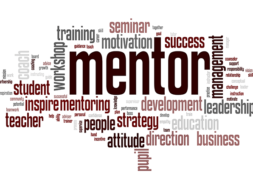
Student Retention Begins Long Before the Student Gets to School
By John King, Ed.D., Independent Education Consultant
In today’s age of gainful employment, emphasis on student outcomes and increased governmental and regulatory scrutiny, keeping students in school and progressing to graduation is more important than ever. Colleges are investing more time and resources to keep students engaged and satisfactorily progressing as new student enrollments get harder and harder to secure. As new student starts decrease, keeping revenue flow through retention becomes critical if a school is to remain viable and profitable. Of course, student retention, aside from the revenue and profit perspective, is critical because the overall success of any career school lies in how many of its students it can graduate and get placed in successful career positions.
In the past, I led a team that successfully developed a systematic student retention program that concentrated on a series of academic and student services focused on engaging students and supporting both the academic and life issues that students faced. This program, integrated throughout the student life cycle produced dramatic improvements in student retention, graduation and student satisfaction. Since leaving that organization I have been refining that system with the intent on expanding its reach and solving some of the other retention issues that schools face.
I am currently working with a client that has asked me to develop a student retention program that will help them solve some of their challenges.
These challenges fell into three categories; cancels, early term drops and overall satisfactory academic progress.
All of these challenges ultimately lead to reduced headcount and revenue flow. Working with the organization we discovered that they had some terrific programs and processes in place and it was a matter of tweaking, adding some new elements and striving for consistency in implementation across all of their campuses.
As I said in the title of this article, student retention must begin long before the student ever steps foot on the campus. The first place to begin your retention program is with a through analysis of your historical data. Institutions are terrific at capturing and recording data but are generally weak at using it effectively, especially when it comes to data on student retention. A through search of your historical data can often provide you with the who, what, when, where and why of student attrition. Looking at which students tended to drop we were able to determine the programs that had the most drops, the characteristics of those students who, dropped, which classes and teachers tended to have the highest number of drops, when in their program these drops occurred and why and how these students dropped.
For example, we discovered that two months, usually after long holiday periods, had a significantly high number of student drops than other months.
We were able to place special emphasis on reaching out to students with advising and coaching to ensure that they were planning on coming back after the break and worked to resolve any academic or life issues they might be facing that could cause them to drop or stop out. The results of these efforts was a significant decrease in drops during these months and more students returning after the breaks.
By analyzing data, we also noticed that in a few of their programs three intro level courses were responsible for the bulk of the drops that these programs experienced. Additionally, certain instructors had a higher number of drops in these classes than others. We were able to analyze the curriculum in these classes and discover some content that was causing students a significant challenge as they did not have the prerequisite knowledge to master it. We were able to move that content to higher level courses and properly prepare students in advance to master the content. We were also able to conduct classroom observations of the faculty in question and provide additional training and remediation and in some cases reassignment.
Our data analysis also provided us with valuable information on trends that helped us to focus on and shore up those areas where we could make an impact on keeping students in school and progressing towards graduation. For example, we found that if we kept a student through their first three terms we were more likely to get that student through to graduation. We also found that a student with positive attendance during the first week of school was four times more likely to stay in school than the student with spotty attendance in that first week. The data showed us numerous other areas where we could have a positive impact on student retention and was extremely helpful to us in the development of our student retention plan which is already showing positive results.
Improving start rate and reducing cancels is a challenge many institutions face. For as long as I have been in education there has always been a concern about getting prospective students to follow through on their commitment to change their lives through education. For some reason between the time they sign the enrollment papers to the beginning of school their motivation and enthusiasm wanes and they decide not to show up.
The admissions department usually takes the blame for these canceled starts, however, the responsibility should really lie with everyone in the organization.
New student starts are the lifeblood of the organization. Every educational institution, regardless of their tax status relies on new student starts. Public institutions need headcount to qualify for their funding. Not-for-profits need to meet their student quotas to justify their expenses and prevent deficits. For-profits need new students in order to cover costs and generate profits. Faculty rely on new students to fill the classes they want to teach. Service staff rely on new students because if they do not show up there is no justification for their employment as there is no one to serve. In essence, everyone has a vested interest in ensuring that students who enroll show up and begin their education. Starts are just as important as graduates for cancels will never turn into graduates.
Admissions teams constantly worry about start rate and it is a key metric that administration closely monitors. Admissions reps make constant and continuous calls, emails and texts to enrolled students reminding them to show up for the next start. In most organizations there are countless hours spend discussing ways to improve start rate and when actual results do not meet budgetary expectations there is lots of concern and heartache. I cannot tell you how many start rate improvement plans I have seen during my long career in education and more often than not they include additional outreach from either admissions or financial aid representatives. The challenge for these folks however, is how to allocate additional time to getting their enrolled students to show up when they still need to be focused on enrolling and packaging the next class. Why not get everyone, including faculty, involved in contacting that prospective student and making them feel like they are already a part of the community.
My client is no different than many other organizations. They have a very detailed plan of on-campus activities and contact points during those time periods between when a prospective student enrolls and when they start school. Naturally, there will be some reasons why a student does not start school that are not easily remedied. A family emergency, illness or other catastrophe event for example or if the individual is not able to qualify for a financing plan. My thinking however, goes to the mindset of that prospective student at the time that they signed the enrollment agreement. This prospect is motivated and eager to start school why not give them the impression that they are starting school immediately.
We created a series of short online workshops designed to help the prospect better prepare to be a student and understand what to expect when they actually start classes on campus.
Wouldn’t it be helpful for a new student to learn some study skills, or about time management, goal setting or self motivation, test taking or other useful skills that would make them a better student? Campus admissions, and retention team staff follow up on these workshops to discuss the individual’s observations and awarenesses and use this as a means to keep them focused on starting the first day of classes. It is too early to tell you the results of these efforts, however, we are counting on these short workshops as well as existing stitch-in programs to improve start rates.
Before the prospective student steps foot on campus it is helpful to know more about the student especially with regard to some of the potential challenges they may be likely to face. Often institutions will conduct an academic assessment to determine the prospective student’s ability to successfully complete post-secondary work. It is also helpful to conduct a behavioral assessment to determine potential red flags and challenges a student may encounter during their time at school. My client had been using a behavioral questionnaire at some of its campuses. We refined the instrument and implemented it at their most at risk campus with a process for follow up by the campus retention team to alleviate any problems a student may encounter before it became a crisis and causes them to leave school. The questionnaire was administered online during the financial aid application process and results immediately transmitted to the campus retention team who in turn could set up a prevention plan for that individual student. As with all retention challenges the objective is to solve the issues before a student makes the absence list. This process has proved successful in helping to do so and enabling the retention team to spend more time helping students who are in school as opposed to chasing those who are not.
Once the student gets to school there are a number of elements to a retention plan that are necessary to keep the student in school and progressing towards graduation. I spoke to these efforts in a previous article and I have restated them in the following paragraphs:
- Orientation – The first few days of school are just as important as the last few. Orientation should be just as exciting as graduation. This is where you have the opportunity to connect with the student and get them started off on the right foot.
- Early academic success – Most new students have never experience post-secondary education and they have their doubts about their ability to succeed. It is important, especially for past underperformers, to have a “Success-Focused” course where they can learn how to be good students, important study and learning skills and what it takes to succeed.
- Technology/online literacy – Much of 21st century work is being conducted via technology and in an online environment. Students need to be exposed early to the technological tools they will need to master in order to be successful both in school and in work.
- Engaging innovative faculty – Student performance and persistence is often won or lost in the classroom. The relationship between student and instructor is critical in the learning process. A commitment to first-rate faculty and their continued development as engaging instructors is critical for successful student performance.
- Student engagement & mentoring program – Providing an early contact person who can serve as a resource and coach for students during those critical first terms is a must. Simple one-hour sessions discussing strategies to address key academic and life issues are extremely helpful for students.
- Faculty coaching & mentoring – Faculty are the most important influence a student will have during their education. In addition to facilitating the mastery of content and skills, faculty serve as role models, mentors and coaches. Faculty can play a role in keeping students focused on their goals and provide them with needed motivation throughout their program. Faculty coaching throughout the student lifecycle keeps the student focused and connected to graduation. An organized process of faculty coaching should be included in the retention plan and faculty should be trained in effective coaching techniques.
- Quality traditional or competency-based curriculum – Even the best teachers need quality curriculum in order to successfully impact learning. Curriculum must be engaging, current, relevant, and delivered in a manner that best meets the learning needs and styles of the learners.
- Financial literacy curriculum – A post-secondary education is one of the biggest investments and financial obligations a student will assume in his or her lifetime. It is critical that they understand the magnitude of this commitment and the responsibilities and consequences that go along with it. Part of the student’s education must include financial literacy and planning.
- Engaging instructional methodology – Today’s students have various learning styles and preferences and extremely short attention spans. Effective faculty must adopt instructional methodology and techniques that connect and engage students and help them learn in the way that best meets the student’s learning needs as opposed to having students adjust to their teaching style.
- Online or blended delivery – Today’s student needs flexibility in their educational schedule. Five days a week, eight hours a day is no longer the norm. The new norm is 365/24/7. Online and blended delivery builds flexibility in the educational process and at the same time provides the student with a real work experience, as the world of work is often online and virtual.
- Professionalism & job preparation – The skills and habits a student develops in school are the ones he or she will bring to the workplace. It is critical that a student begins working on professionalism and job preparation from day one. Professionalism, portfolio preparation and resume building should begin on the first day of school.
Hopefully, this article has convinced you that there is much to be done to improve student retention and performance and it should be done as early as possible…before the prospect steps foot in school. It takes training and commitment from every member of the organization to make this a reality. However, it can be done and if done well will add to the success of your organization, and of most importance, your students.

Dr. John King is a seasoned professional dedicated to providing strategic services for organizations seeking improved operational effectiveness and growth through change or strategic direction. Dr. King can be best described as an educator, entrepreneur, futurist, innovator, marketer, strategist and leader. John King is an independent strategic consultant based in Naples, Florida. Throughout his career, John has been focused on bring innovation and forward thinking to the organizations and institutions with which he has been associated, most recently as Senior Vice President and Chief Academic Officer at Lincoln Educational Services. In addition to serving as SVP and Chief Academic Officer of Lincoln Educational Services Inc., he has served as Senior Vice President of Academic Affairs at Career Education Corporation, Provost & Vice President of Academic Affairs at Brown College in Minnesota, and Dean of Business & General Education at St. Paul Community & Technical College. John has also been both a full-time and adjunct instructor at the undergraduate and graduate level.
Prior to entering education in 1988, John worked in Marketing and Communications with such firms as Campbell-Mithun Advertising in Minneapolis, Tec Trans International Inc. in Minneapolis and Allied Stores Marketing Corporation in New York. John also operated his own consulting firm for ten years and was a partner in The Creative Edge and Bijou, commercial and corporate video production companies.
Dr. King has served as chair or trustee for various colleges including Lincoln College of New England, Lincoln College of Technology – Columbia, MD, and McIntosh College in New Hampshire. John has also served on the Dakota County (Minnesota) Private Industry Council, the Eagan, Minnesota Economic Development Commission, the Small Business Management Program Advisory Committee of Dakota County Technical and Community College, the Employee Assistance Program Advisory Board of Family Service of Greater Saint Paul, and the Small Business Publicity Committee of the Minneapolis Chamber of Commerce. John was also on the Board of Directors of the Twin Cities Marathon.
In 2010 Dr. King was featured in the cover story “Who Influenced Education This Year” in Career College Central Magazine.
John earned a BA in Economics at St. Bernard College, a Masters in Education from the University of Minnesota and a Doctorate in Educational Leadership from the University of St. Thomas.
Contact Information: Dr. John King // Independent Education Consultant // Phone: 862-438-7039 // King0558@verizon.net










